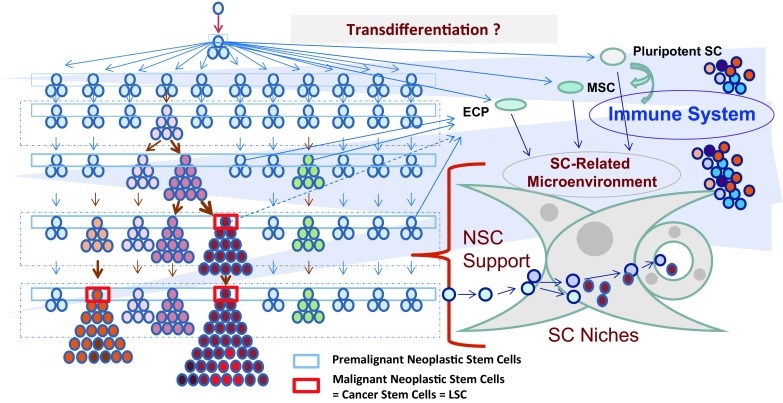Fig. 1.

Evolution of neoplastic disorders and impact of the microenvironment. In an early phase of cancer evolution, normal stem cells acquire early lesions and thereby transform into self-renewing neoplastic stem cells (blue rectangle boxes). These premalignant neoplastic stem cells are slowly cycling or dormant cells that persist and slowly acquire additional pro-oncogenic lesions and hits (color change) in distinct sub-clones. The resulting diversification into many different sub-clones is a constantly ongoing process. In a next step, the stem cells of one or more of these premalignant sub-clones acquire critical combinations of oncogenic hits and thereby an enhanced proliferative potential and the capacity to produce an overt neoplasm. Finally, these stem cells and their sub-clones acquire additional pro-oncogenic lesions and convert into fully malignant neoplastic stem cells (red rectangle boxes) producing an overt cancer. In the context of a solid tumor, these cells are then called cancer stem cells (CSC), and in the context of leukemia, these cells are termed leukemic stem cells (LSC). Cancer/leukemia evolution is triggered by the genetic background, a number of different exogenous factors (viruses, toxins, etc.), epigenetic events, the microenvironment and the immune system. The stem cell-related microenvironment, also called stem cell (SC) niche, has been implicated in stem cell survival, stem cell homing and stem cell resistance. In certain neoplasms, some of the micro-environmental cells may be derived from clonal cells through transdifferentiation. The immune system has been implicated in immunosurveillance; however, in an overt malignancy, neoplastic stem cells have the capacity to escape immunosurveillance
